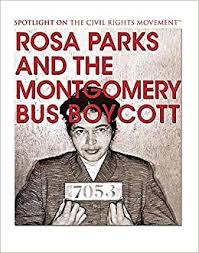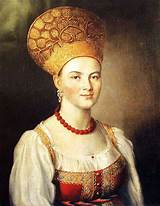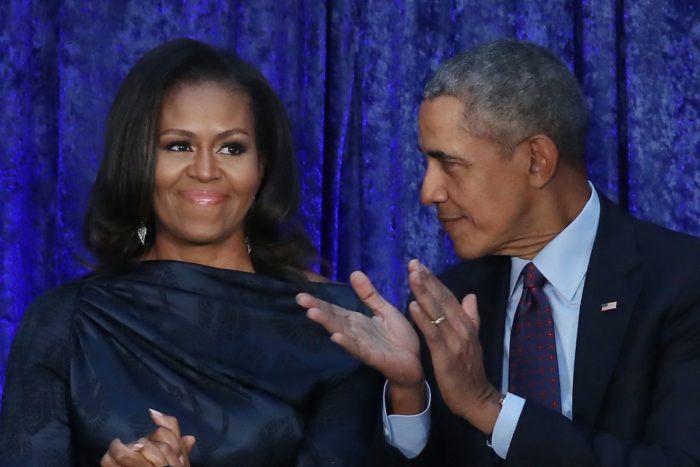By Maymunah Ibrahim
Happy March! Ah, this month, hands down, is probably my second favorite month of the year, only after February. For those who do not know, it’s Women’s History Month. A month dedicated to celebrating the influence on women throughout history.
Being an African American female in a world that isn’t 100% accepting of my race or gender, the months of February and March bring out the most confidence in me. In these months, I’m reminded of how far we as a society have come. Our modern ways of thinking, which were brought about by powerful revolutionary leaders, now allow all women to vote and run for office and hold high jobs with equal pay to men in many jobs. Although we still haven’t had a female president, I am confident that sometime in the near future, we will have a woman in the White House.
In honor of this annual celebration, I’ve made a list of three women whom I believe have made the biggest contributions to modern civilization. Although no individual is perfect, these women, among many more, have worked to pave a brighter and more accepting future for all women. Their example continues to inspire girls and women all over the world to chase their dreams, to work hard for what they want, and to never let anyone tell them that they are unable to do something simply because of their gender.
Rosa Parks
Rosa Louise McCauley Parks was born on February 4th, 1913, in Tuskegee, Alabama. Her mother was a teacher, her father was a carpenter. When Parks’ parents split, she and her younger brother moved with their mother to Montgomery—Alabama’s capital city.
Despite racial segregation in the south separating African American and white students, Rosa loved to learn, and enjoyed school. She left school at 16 to take care of her sick grandmother and her mother, but after she married Raymond Parks at 19, she finished school, then worked as a seamstress.
During Parks’ time, ‘Jim Crow’ Laws were in place. These laws separated black and white people in most public places— from schools to movie theaters. These laws “claimed to give African Americans “separate but equal” status, but in reality, there was nothing equal about it. “Whites Only” buildings were much nicer and well kept than establishments or facilities purely for “colored folks”—a phrase that was used mainly in the 20th century to refer to African American individuals.
African Americans were often limited to low-paying jobs,and state laws made it incredibly difficult for them to vote. Everything about society in the 1900s made it nearly impossible for black people to rise up against inequality and gain the civil rights they deserved.
However, individuals like Rosa and her husband found ways to stand up for themselves and others. Together, the Parks joined the National Association for the Advancement of Colored People. More commonly known as “the NAACP”, this association was created in 1909 for the purpose of : ‘… [ensuring] the political, educational, social, and economic equality of rights of all persons, and [eliminating] race-based discrimination.’
Rosa’s revolutionary action occurred on the first of December in 1955. After work, she got on the bus headed home. At the time, the bus was sectioned off so that whites sat in the front while blacks sat in the back. The seats in the back filled up quickly, and so when a white man walked onto the bus, the blacks then sitting in the white section were told to get up and move to the back. They all complied, except Rosa. She refused to get up and was arrested and fined for “breaking segregation laws.” Rosa refused to pay the fine and said she was not in the wrong.
After hearing of Mrs. Parks’ arrest, African American citizens of Montgomery got together under the direction of the Montgomery Improvement Association, lead by The Reverend Dr. Martin Luther King Jr, to boycott city buses. The protest took place December 5th, 1955, and was very productive because of how many participants they had. Because African Americans made up around 70% of all bus users, the city bus services made much less money than they usually did.
Nonetheless, the boycott wasn’t easy for blacks. Many didn’t have cars, so they had to walk long distances or carpool with friends. They also received a lot of backlash from white citizens and many were violently attacked. All the pain and struggle paid off on November 13th, 1956, when “the Supreme Court ruled that Alabama’s racial segregation laws were ‘unconstitutional’,” meaning they were illegal. From that day forward, Mrs. Rosa Parks was known as “the mother of the civil rights movement”.
Catherine The Great (Catherine II)
Sophia Augusta Frederica was born in Stettin, Prussia (now Szczecin, Poland), on April 21st, 1729. Her parents were Prince Christian August of Anhalt-Zerbst and Princess Johanna Elizabeth of Holstein-Gottorp. Sophia was greatly neglected by her mother because she had wanted a son, but she was very close with her governess Babette. She read poetry and learned French, and it quickly became obvious that Sophia was very smart.
When Sophia was 15, she was invited by Empress Elizabeth of Russia to meet the young heir to the Russian throne, Grand Duke Peter. Peter was already known to be immature and disagreeable at just the age of 16. The two were willing to wed each other, but Catherine later said she was less into Peter himself and more into the title she would receive upon marrying him. Nonetheless, Sophia converted to the Russian Orthodox faith and married Duke Peter in 1745, one year after their first official meeting.
Their marriage was miserable, and both Catherine and Peter cheated on each other a lot. But Catherine didn’t let her unfortunate situation discourage her as she gradually gained ruling power and respect within the Russian court. She was headstrong and tough, leading Russia through its defeat of the Ottoman Empire in the late 1700s during the Russo-Turkish War, and making Russia the dominant power in South-Eastern Europe. Catherine became the longest reigning female ruler of the Russian Empire, and used her knowledge and power to lead Russia through many educational reforms such as free public education and allowing women to be formally educated.
Catherine the Great also helped strengthen the Russian government through civic reforms, and expanded the Russian Empire through both conquest and diplomacy, as well as expanding trade with other European countries. She was also very involved in promoting Enlightenment philosophies, conversing with thinkers such as Voltaire, writing comedies, and sponsoring the arts, sciences, and education.
She wrote about her beliefs in a document called The Instruction of Catherine the Great, detailing the laws she believed a society should have. Things such as equality of man, forbiddance of harmful acts upon a person, and a distaste for torture and the death penalty can be found in this document. Some of her thoughts were even adopted by the United States when preparing our constitution.
https://www.encyclopedia.com/people/history/russian-soviet-and-cis-history-biographies/catherine-great
https://www.historyextra.com/100-women/100-women-results/
Michelle Obama
Michelle LaVaughn Robinson was born on January 17, 1964, in Chicago, Illinois, to Marian and Fraser Robinson. She has an older brother named Craig and grew up in a low income household. Even though her family didn’t have a lot of money, Michelle and her brother excelled in school. They had to travel a long distance to attend high school, but while there, Michelle made the student council and became part of the National Honor Society, graduating as salutatorian in 1981. Both Michelle and Craig went to Princeton, Michelle majoring in sociology and minoring in African-American studies. Michelle graduated from Princeton in 1985 and graduated from Harvard Law School in 1988 with her JD.
Michelle went to work for the Sidley Austin law firm in Chicago as a junior associate. She was assigned to mentor Barack Obama, and their romance quickly blossomed. The couple married on October 3, 1992.
Michelle left the law firm in 1991 to create a career in public service that helped fuel her husband’s political dreams. She grew from a position as Chicago mayor Richard Daley’s assistant, and by 1993, she became the Executive Director for the Chicago branch of Public Allies. After this, she proceeded to become the Associate Dean of student services at the University of Chicago.
Barack Obama ran for Illinois state senator in 1996, and with the help of his smart, creative wife, he won. Michelle struggled to raise her two baby daughters while working because her husband was constantly busy with state demands. However, in 2005, Michelle was able to become the Vice President of Community Relations and External Affairs for the University of Chicago Hospitals. She continued to expand her career, but dialed down her work hours to support Barack’s entry into the presidential election as a Democratic candidate.
With Obama in office, Michelle used her First Lady position to do some good. She turned her attention towards fighting childhood obesity, initially working with an elementary school to create a large garden growing healthy foods right on the lawn of the White House. She then formally launched her “Let’s Move!” campaign to advertise the importance of playful exercise and physical movement for children.
In 2011, she helped start the Joining Forces program to bring more awareness to the struggles veterans and their families go through, as well as helping them get jobs. After President Obama won office for the second time, she created the Reach Higher program to inspire teens to continue their education and help them secure great career opportunities.
Michelle Obama promotes family unity by involving her daughters and mother in her journey to better the world. She stays connected to younger generations by keeping up with modern trends, and uses social media to spread the news of her various social-service campaigns and projects.
https://www.history.com/topics/first-ladies/michelle-obama


